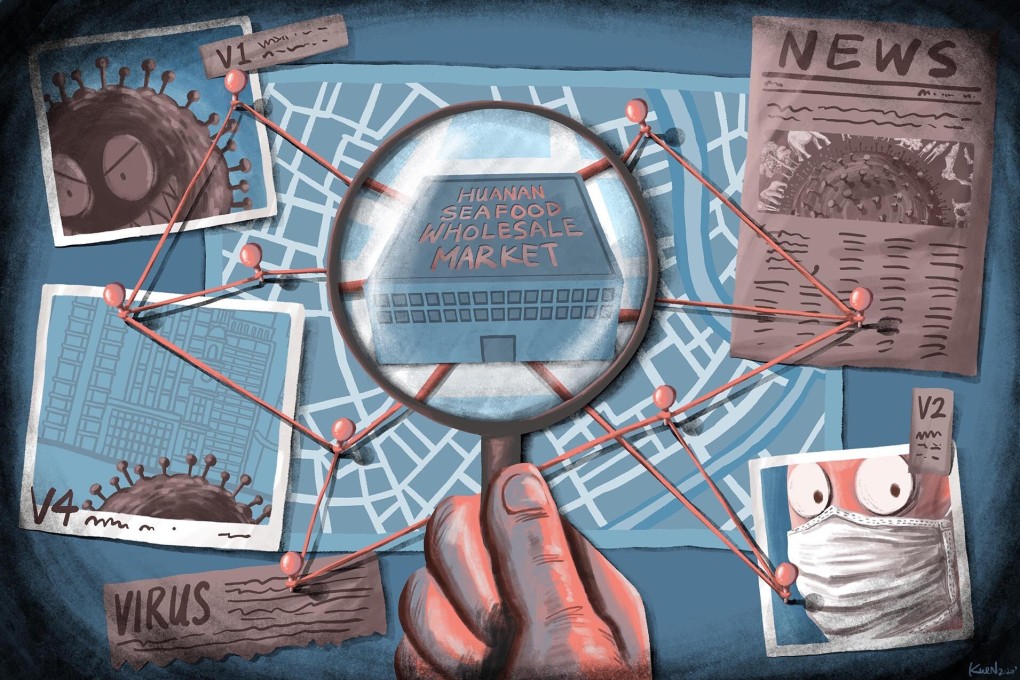Exclusive | WHO’s coronavirus detectives look to Wuhan market as undisclosed map surfaces
- A previously unpublished floor plan of the city’s Huanan market shows where people with the first recorded Covid-19 cases worked or shopped
- This comes as the WHO investigates the source of the virus, which China says originated elsewhere, and pandemic politics sours US-China relations

This is the third story in a 15-part series on the Covid-19 disease, one year after it first emerged in the Chinese city of Wuhan. It takes a closer look at the Wuhan market, using a never-before-published floor plan of the sprawling facility used by the early investigators in China. Please support us on our mission to bring you quality journalism.
A sprawling seafood market in the Chinese city of Wuhan was the original ground zero for scientists looking to pinpoint where and how the virus that caused the Covid-19 pandemic first crossed into humans. One year on, the search is returning to that controversial site.
In December last year, as patients started showing up at Wuhan hospitals with unexplained pneumonia symptoms, doctors noted many had worked at the city’s Huanan Seafood Wholesale Market. Chinese officials later ruled out the market as the place where the virus first infected humans, citing medical investigations of the facilities.
But China has released sparse details about its studies of the market, which at the time employed more than 1,100 people at hundreds of food stalls over an area the size of about four soccer fields. Beside seafood and vegetables, it also sold varieties of wild animals.
A World Health Organization (WHO) investigation that kicked off in October will now look again at the market to try and reconstruct the outbreak, as Beijing promotes a view that the virus could have originated outside China. Researchers say the mission will need access to information that has not been made public about what was found at the market.
As the WHO embarks on its review, the South China Morning Post has obtained a never-before-published floor plan of the Huanan market used in those first investigations that provides a rare public glimpse into what took place.